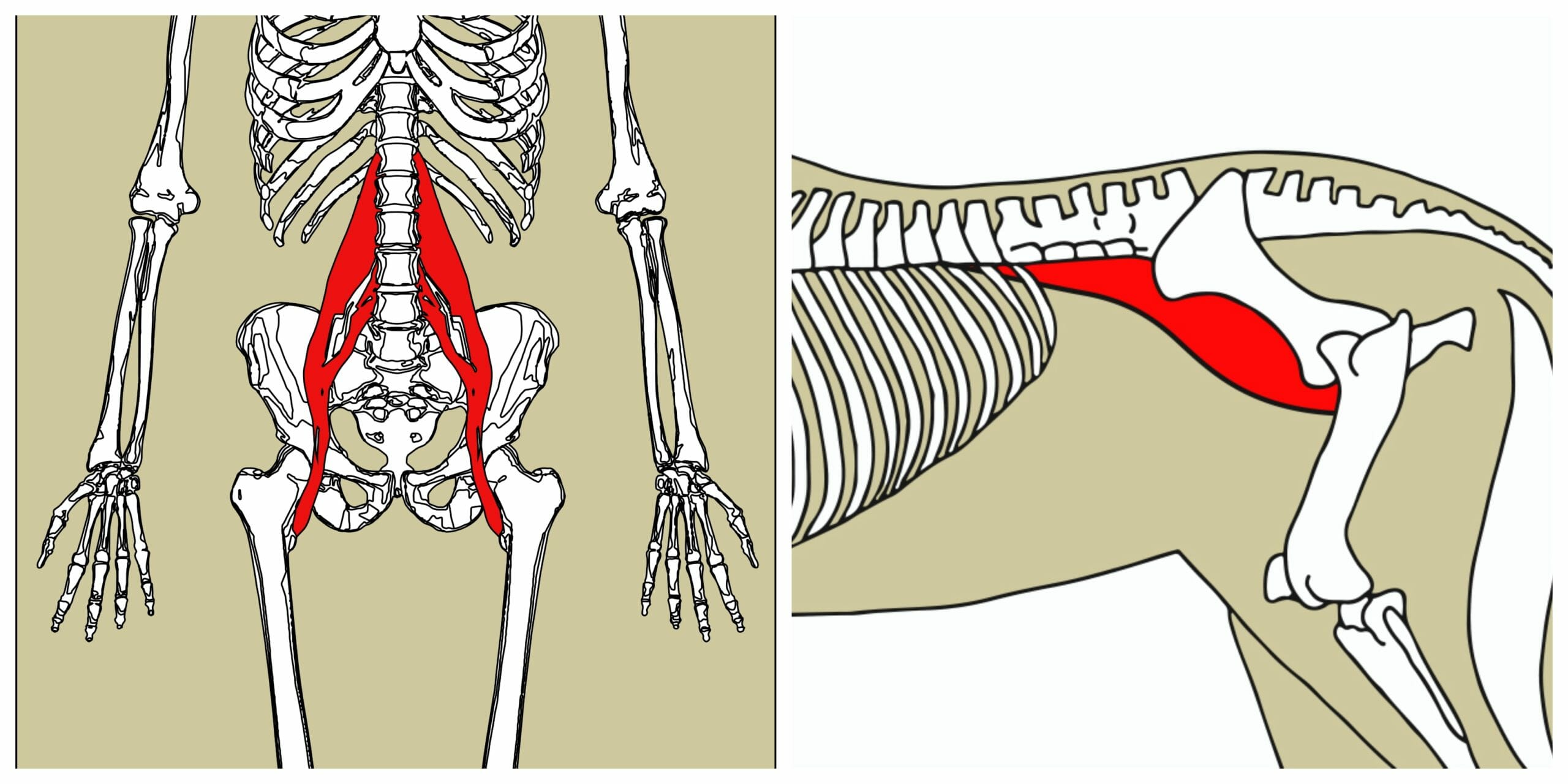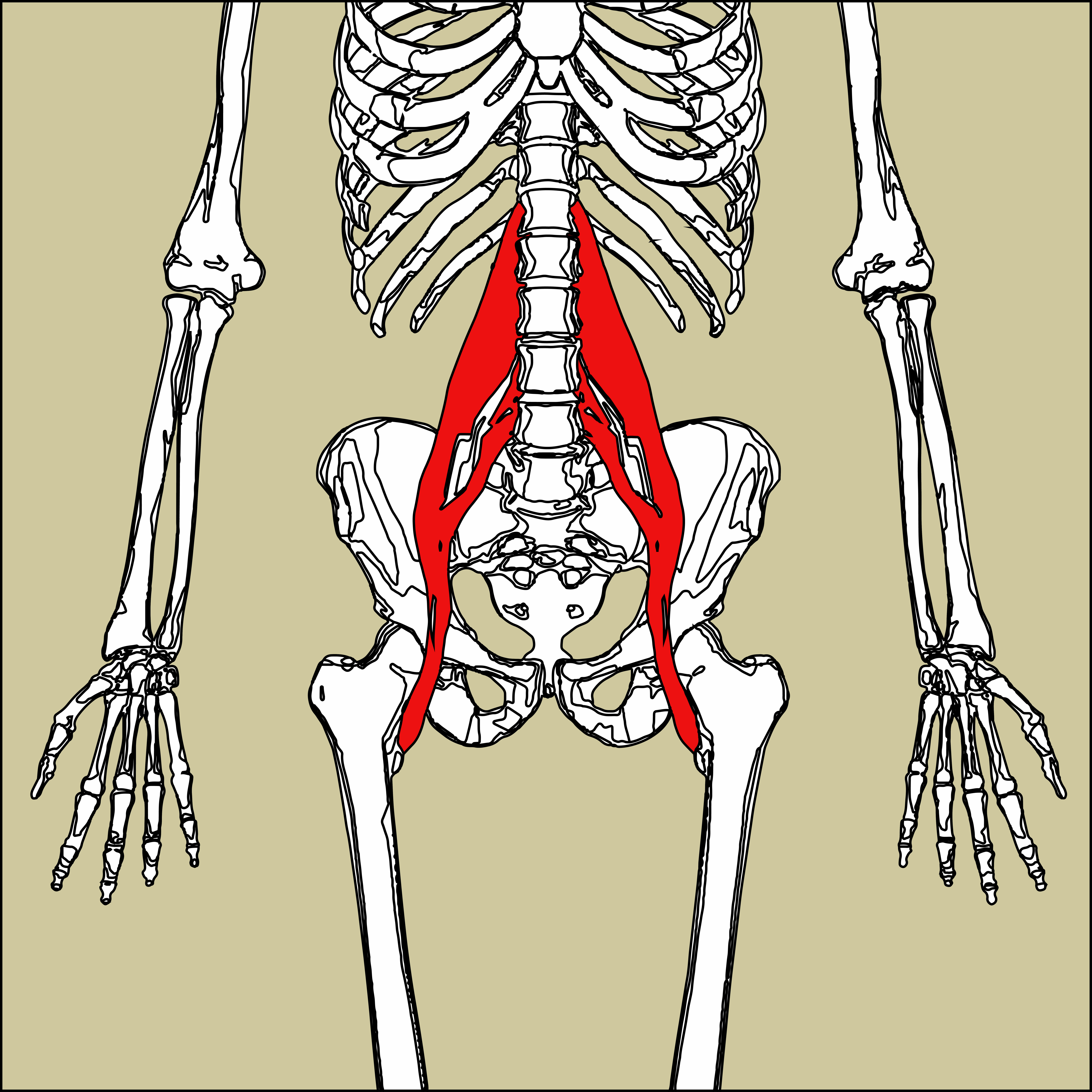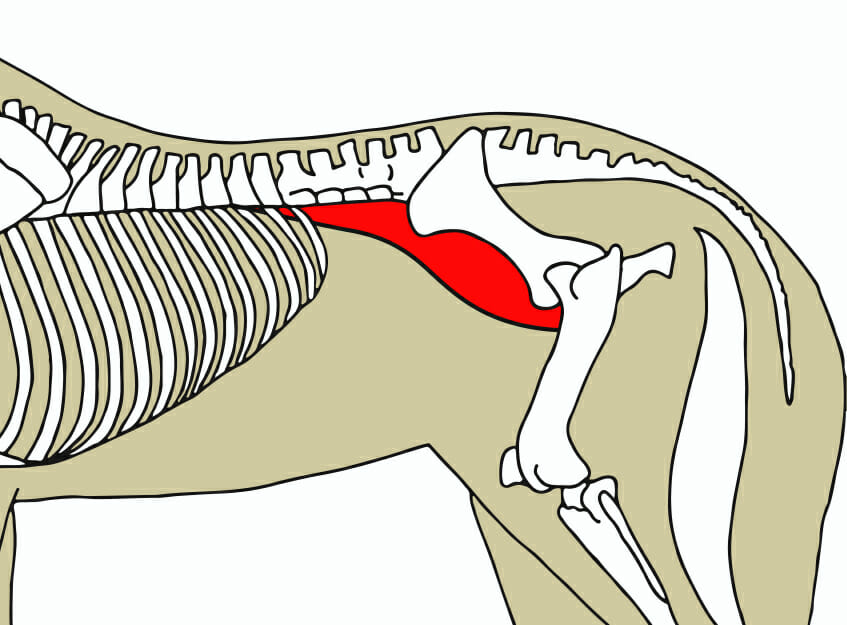What Equestrians need to know about the Psoas Muscle – Part 1

The Psoas Muscle
At first glance, horses and humans are two very different animals, but if you look at us from an anatomical perspective, we are actually very similar.
Our arms are made up of the same bones as the horse’s front legs (with the exception of the collarbone), we both have seven vertebrae in our neck and our skeletons are moved by muscles located at the same place with the same function.
One of the muscles that is absolutely key in the movement of both horse and rider, is the psoas muscle, located deep in our centre. The psoas connects the back, pelvis and legs and is our quintessential core muscle.

Our core, our stability and our emotions
The psoas muscle has gotten a lot of attention in the last few decades, especially in the realm of physiotherapists and movement specialists. Often you will hear the term psoas used as an umbrella term for three different muscles that work together: psoas minor, psoas major and iliacus.
Sometimes the term used is the iliopsoas complex. All three muscles are located close together and act as a group, so we can think of them as a functional unit. If you look the psoas up in an anatomy textbook, you will find it labelled as a hip flexor – but in reality, it is much more than that.
It is our most important core muscle, as it is literally located at the centre of our body. It is the only muscle directly connecting the back and legs – spanning from the lumbar vertebrae through the pelvis to the femur. Due to its unique position, it is vital for stabilizing the lower back.

The psoas lies deep within the body and while can’t really palpate it properly, it has a huge effect on our posture, the functionality of our pelvis and our ability to find a balanced, independent seat on the horse.
In addition to all of that the psoas is tightly connected to our emotional state, as it plays a role in certain physical reactions (like curling up into a foetal position) that stem from intense emotions. In the horse’s body the psoas serves a similar function.
Just like in humans, the equine psoas also spans from the lumbar vertebrae through the pelvis to the femur and primarily acts as a hip flexor. It plays a very important role in collection, jumping, accelerating and many other feats.
While we can’t properly palpate it to assess its wellbeing, we can gather a lot of information about it from the horse’s posture, performance and the functionality of his pelvis.